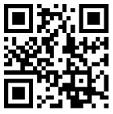Introduction
Electrical products shipped to Australia must meet electrical safety and electromagnetic compatibility requirements, and some products must also meet the energy requirements of Australia's MEPS. In Australia, the Electrical Safety Qualification Assessment System is state or county responsible, and each certification body implements a mutually acceptable certification approval program under the 1945 Electrical Safety Act. Electrical products are classified into two categories: “reportable” and “no declaration”. Electrical products under the “reportable” category must comply with relevant Australian safety standards and obtain certification from a state-level certification body. Electrical products under the “no declaration” category can be sold without approval. However, retailers, manufacturers and importers must ensure the electrical safety of such products. In Australia, electromagnetic compatibility requirements are governed by an electromagnetic compatibility architecture (Radio Communications Act 1992). All electrical products within this architecture must comply with Australian standards and obtain the right to use the C-Tick logo from the Australian Communications Authority. The RCM logo can also be used for products that meet both electrical safety and electromagnetic compatibility requirements. Any Australian safety mark is also recognized by New Zealand. Australia's standards body is Standards Australia International Limited, which was formerly known as the Australian Commonwealth Engineering Standards Association in 1992 and was changed to the Standards Association of Australian (SAA) in 1929. The Australian certification is called SAA certification and should be based on the standards set by the SAA. Short for certification, but as a standard-setting body, SAA has never issued a product certification. SAA was renamed Standards Australia in 1988 and was changed to a limited company in 1999 by the Association, known as Standards Australia International Limited. SAA is an independent company that has no direct relationship with the government, although the federal and state governments are among its members. However, the importance of being in the technical infrastructure of any country means close cooperation with the government and is very necessary. To ensure this, since 1988, there has been a memorandum of understanding between SAA and the federal government recognizing that SAA is the highest organization of Australia's non-governmental standards bodies. In the memorandum, it was pointed out that the formulation of standards should be consistent with the requirements of the WTO. To this end, there are agreements that indicate that when appropriate international standards already exist, there is no need to develop new Australian standards. Australian standards begin with “AS” and the joint standard between Australia and New Zealand is the AS/NZS’ standard. Australia's standards and New Zealand's standards are basically the same as the IEC (currently Australia's standards are 33.3% fully consistent with national standards), there are some national differences, such as due to the geographical location, certain product standards (such as fans) must be Consider the tropical climate.
Nature: Mandatory (Voluntary)
Requirements standard: safety and EMC
Voltage: 240Vac
Frequency: 50Hz
Member of the CB system: Yes






